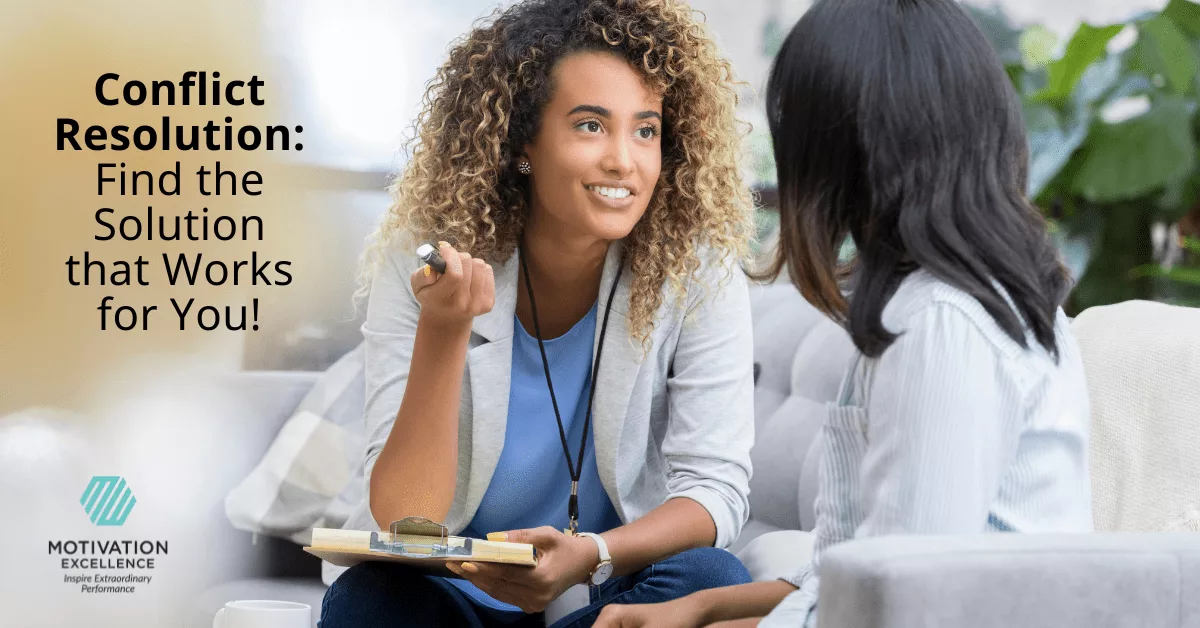
Ever feel like you run into conflict with the same person again and again? Maybe it’s a coworker, or a family member, or a friend of a friend. Sometimes personalities just clash, and it’s not necessarily always one person’s fault. (Although, honestly, we all run into people who seem to make it their goal to make your day a little harder.) Knowing that we all face individuals, or situations, that make us want to scream, or run away, or break out in tears, having conflict resolution tools at our disposal is important.
So Many Strategies
Think of the following as a warehouse of conflict resolution solutions. There are a lot to choose from! You may find some will work better than others, depending on your personal situation.
PositivePsychology.com reports that being in a prolonged state of conflict is harmful emotionally, physically and mentally. Their in-depth article on everything to do with conflict resolution outlines:
- Key skills to develop (including self-awareness and active listening)
- Methods to use in an office setting
- Health benefits to relieving conflict
- Games and activities to facilitate resolution
A key takeaway, for those in a rush to find viable solutions, is to allow your emotions to subside before engaging in any other technique. Take that deep breath, walk away for a moment or longer, and let the immediate rush of emotion dwindle so you can lead more with your head than your ego or heart.
Tammy Dunnett is a communication coach and self-titled “talksicologist” who specializes in conflict resolution. She published an article on LinkedIn promoting the “5 Cs of Communication in Conflict.” Her advice to maximize the connection and minimize the conflict is to be:
- CLEAR with your feelings
- CONCISE with your words
- CURIOUS about the other person’s perspective
- COMPASSIONATE about the other person’s feelings
- COLLABORATIVE in finding a solution
Vermont-based Champlain College outlines its top five conflict resolution strategies, focusing on recognizing the issue and organizing a solution.
- Don’t ignore it
- Clarify the issue
- Talk together
- Find a solution
- Monitor and follow up
My final entry into this handy “conflict resolution solutions warehouse” is from BetterUp.com. This article outlines the five conflict management styles most of us fall into, from avoidance to collaboration. It then highlights 11 strategies to help resolve struggles we might face in everyday life, including:
- Be humble
- Avoid being defensive
- Show willingness
- Exercise patience
- Stay positive
Create Your Own Set of Solutions
After reading through the above articles, and more, I developed my own list of strategies to share. I whittled it down to four, and made them all start with a “W” as a catchy way to remember them–and also because alliterations are fun!
At the very basic level, both conflicted parties need to:
- Want it – be on the same page as far as the issue and goal
- Work at it – even distribution of effort required
- Walk away, when needed – breaks are OK and encouraged
- Welcome peace – appreciate your similarities, don’t focus on the differences
If the people engaged in the conflicted behavior can’t agree on the above, having a mediator join the discussion is encouraged. A third party is not emotionally attached, and therefore can cut through a lot of the clutter that could be clogging negotiations.
Use It Before You Lose It
We’re not advocating you go out of your way to find conflicts to resolve, but we all encounter a myriad of situations, sometimes daily, where we can call on the ideas in this blog to save ourselves, and others, some aggravation. Here are some real-life examples and solutions:
- Road rage?
- Deep breath – clear those emotions
- Compassion – give the other driver some grace
- Walk, er drive, away – the interaction was a split second; don’t let it take any more of your time and energy
- Judgmental comment made?
- If it’s by someone you know
- Be calm and clear with your feelings about it
- Listen to the other person’s perspective – perhaps they didn’t mean it the way you perceived it
- Welcome peace – don’t go out of your way to find reasons to be mad
- If it’s by a stranger
- Exercise patience
- Show positivity
- Be concise with your response, if you choose to make one
- If it’s by someone you know
- Your coworker constantly corrects you?
- Don’t ignore it, if it bothers you
- Don’t be defensive – assume good intentions
- Talk through it together – you might be on the “same side”
- Find a mediator if you need one
Sometimes, the best person to resolve conflict with is yourself! When you learn how to let the small things slide without riling up your emotions, it gets easier to stay calm during adversity. Maybe it’s developing an inner Q&A (Does this really matter? Do I need to make some personal adjustments? Does this have to be a fight-or-flight situation? Is this just a fleeting moment I can get through?).
When you can calm down your inner turmoil, projecting outer peace is so much easier! Finally, a genuine smile and gentle attitude can turn many would-be conflicts into positive connections, more often than you know.
And, remember we’re all different—and that’s good! It can be worthwhile, and even fun, to consider where the other person is coming from. You might gain a new perspective, or at the very least, learn what makes the other person tick…or get ticked off (always good info to have!).


